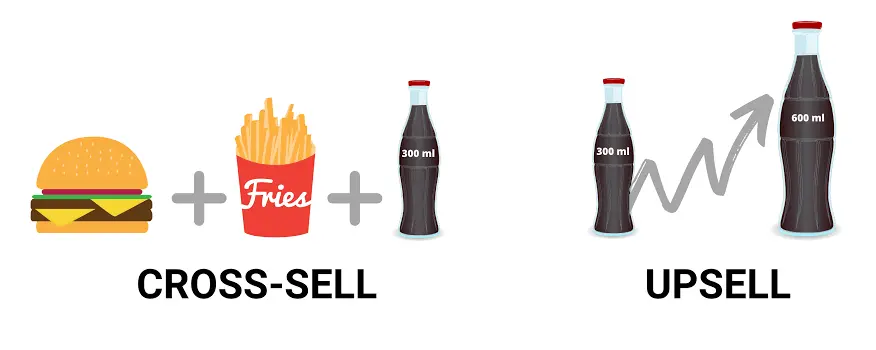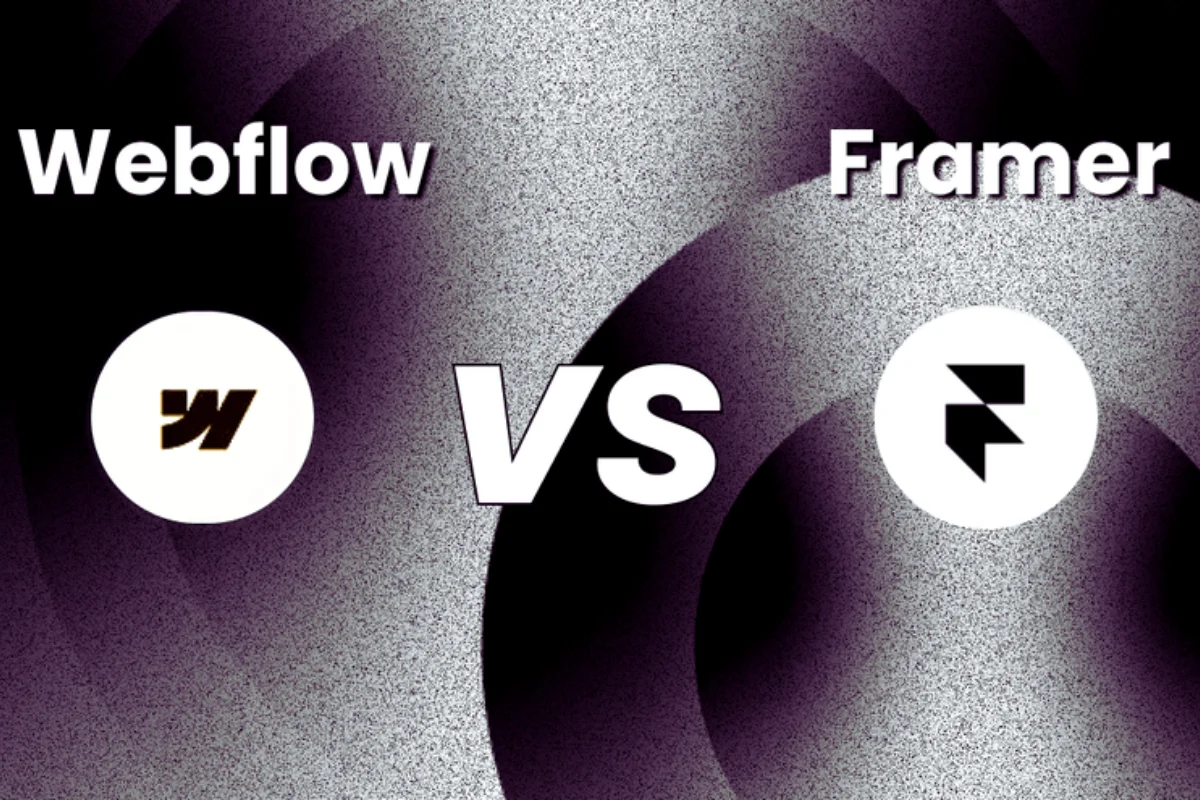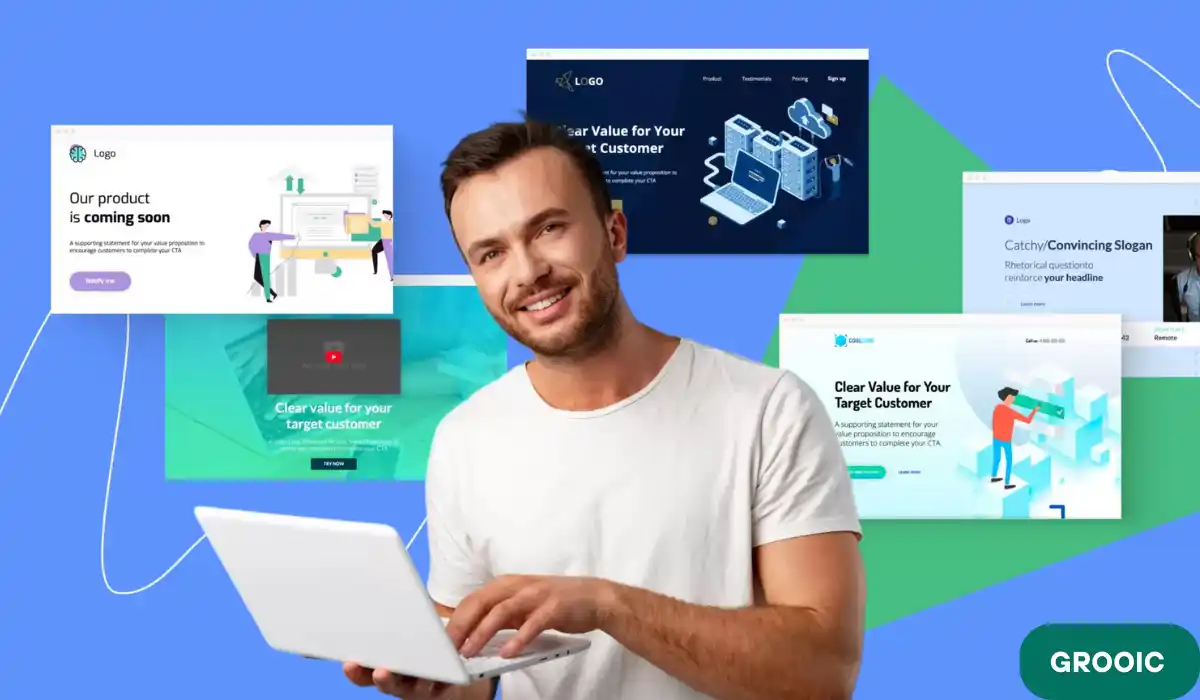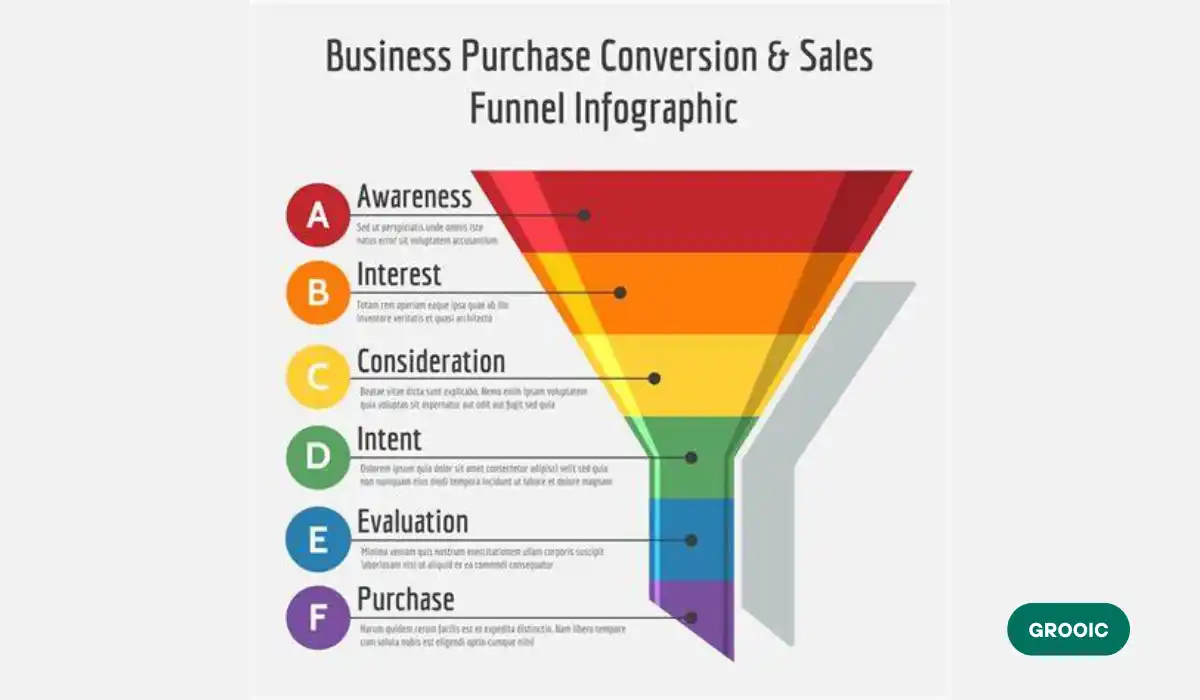Upselling and cross-selling strategies can boost your sales and improve customer satisfaction. By offering the right products at the right time, you can improve the shopping experience. Learning how to implement these strategies can help your business grow and keep your customers happy.
Table of Contents
Upselling and Cross-Selling
What are Upselling and Cross-Selling?/ What is cross-selling and Upselling?/ What Does Upsell Mean ?/ What Does Cross Sell Mean?
Upselling and cross-selling are two powerful sales techniques. They improve the customer buying experience and boost revenue. Here we will know upsell meaning and how to work with it. Grooic LLC provides the best upselling and cross-selling services all over our customers.
Up-selling: Upselling is when a client is offered a more expensive product than the one he/she needs. For instance, when a customer wants to buy a smartphone, suggesting one with additional storage or superior functions would be considered upselling. Here we get a clear definition of what’s upselling or The Meaning of Upselling.
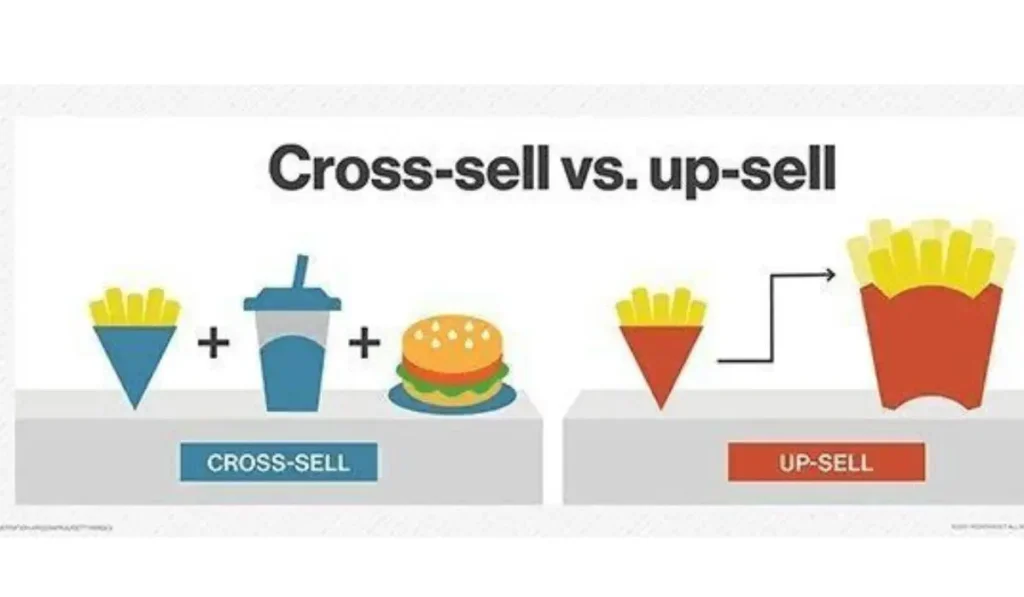
Cross-Selling: This technique requires recommending accompanying products to customers. For instance, if someone is purchasing a laptop, proposing software or laptop bags would be an example of cross-selling.
Categories of Upselling and Cross-Selling
Upselling and cross-selling can be categorised based on the approach and timing. To do upselling and cross-selling, we need the best a-b testing methods. Gooric LLC can provide the best service to you.
Pre-purchase offers
Upselling and cross-selling are known as pre-purchase offers that are made before completing a transaction. The purpose of these recommendations is to enrich the user’s buying experience by displaying premium versions, upgrades or additional items on product pages. Grooic LLC’s creative landing page will provide the best content, and help them explore their best solutions.
By doing so, the organisation increases average order value and imparts more personalized shopping. Presented before completion of the transaction. For instance, one may suggest premium memberships or upgrades on product pages.
Point-of-Sale Offers
Point-of-Sale Offers Recommendations during checkout. These recommendations could be things such as complementary products, extended warranties or other add-ons for the items the customer is buying.
Boosts the purchase experience for customers in the hope of increasing transaction value whilst not inhibiting the customer’s buying journey. Offer is Presented at the check-out page
For Example: Recommend additional warranties or accessories.
Post-purchase offers
Likewise, the post-purchase offer presented in this instance is an attempt to sell something to a customer after they have already bought something. These might be follow-up emails about other items they could purchase or other versions of the item they bought.
They help to keep engagement with the customer and entice their purchase again and again making them satisfied and loyal and resulting in more sales. Presented at the completion of a transaction
For example: Follow-up emails with suggested products
Effective Tools for Upselling and Cross-Selling
The right tools can greatly impact your upselling and cross-selling. Here are some popular tools along with their success conversion rates:
| Tool Name | Conversion Rate Increase | Average Order Value Increase |
| Bold Upsell | 20% | 15% |
| Recombee | 25% | 18% |
| OptinMonster | 22% | 16% |
| CartHook | 18% | 12% |
| Yotpo | 17% | 10% |
Implementing upselling and cross-selling strategies
To effectively implement these strategies, consider the following steps:
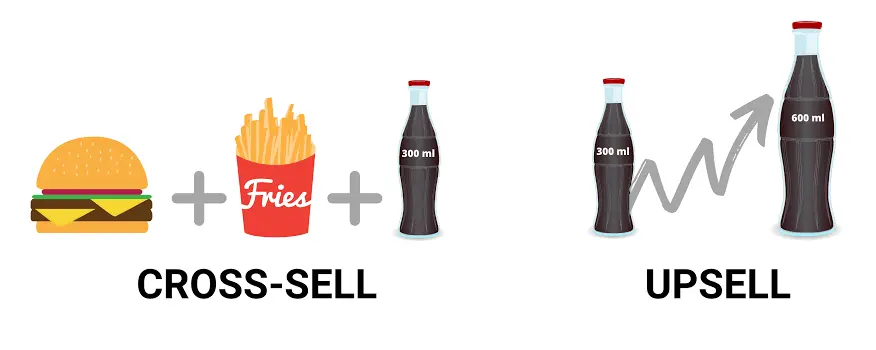
Understand customer needs
Knowing the customer involves tracking buying behaviour and preferences to provide personalised service. You can use customer data to discern what products they might find worthwhile.
This will make sure that your upsell and cross-sell offerings are user-specific and informative, improving the shopping experience, which ultimately increases the sales success rate. Study Your Customers, Determine Buying Habits & Preferences
Recommend item now appropriate & real-time using this data
Leverage technology
AI tools and engines Powering and optimizing upselling and cross-selling propositions via automating. Ensure that these third-party tools can be easily integrated into your website or app. This means that when a customer opens your website, a smooth experience will be experienced. Leverage Technology:
AI-based tools and recommendation engines to streamline the upselling and cross-selling process. They analyse customer data to make intelligent marketing suggestions, send offers based on automation and consider timing to make them more relevant, and improve customer’s overall experience.
However, integrating these tools into your existing website or app can dramatically improve sales and give your customers a better impression of your business.
Train Your Sales Team
Train Your Sales Team Train your sales team to notice an upsell or cross-sell opportunity. Teach them what the product does and what the customer needs. Suggest complimentary items that will help or add value to what they are already buying. Ongoing training guarantees that the most relevant offers are,
- Presented to prospects,
- Resulting in higher sales and
- Overall satisfaction of your customers.
Provide your sales team with in-depth training. They must identify upsell and cross-sell opportunities. Ask them which items they think you should help push. The products themselves must be able to provide a true benefit in addition to the purchase of the customer.
Monitor and Adjust
- Continuously track the performance of your upselling and cross-selling efforts.
- Use metrics. These include conversion rates and average order value. Use them to measure success. Then, make any needed adjustments.
Best Practices for Upselling and Cross-Selling
- Be relevant. Recommend products that truly help the customer.
- Timing is key. Present your offers at the right times during the customer journey. This way, you won’t interrupt the buying process.
- The value proposition must clearly state the benefits. It should explain the upsell or cross-sell to the customer.
- Don’t overwhelm customers with too many offers, keep it simple and focused.
Upselling and cross-selling are essential techniques for boosting sales and customer satisfaction. You can apply upselling and cross-selling strategies. You can do this by understanding customer needs.
Use the right tools and follow best practices. You can use these strategies before, during or after a sale. They can help you give value to customers and grow your business.
Upselling Examples Using Tools
Analysis of customer behaviour and suggestions for relevant upgrades or additional products have been made easier when upselling thanks to several tools. The following are some Examples of upselling using some of its tools, that’s how we will understand UP sell meaning with their efficiency statistics:
Bold Upsell
How it works: As the customer checks out, Bold Upsell evaluates older purchases and suggests enhanced alternatives or complimentary products.
Statistics: It attains a 20% conversion rate increase and adds up to 15% more on average order value.
Recombee
How it works: Recombee applies machine language learning algorithms to suggest personalised up-sell offers based on the user’s browsing history and preferences.
Statistics: It leads to a 25% conversion rate increase and an average order value that is 18% higher.
OptinMonster
How it works: OptinMonster provides specific pop-ups or banners directed at visitor behaviour or preferences which recommend potential upsells.
Statistics: This translates into a 22% conversion rate increase as well as an additional 16% in average order value.
CartHook
What They Do: CartHook is a platform that allows users to offer more choices to their clients even after they have bought something.
Stats: It increases conversion rates by 18% and average order value by 12%.
Yotpo
What They Do: Yotpo leverages product reviews by customers and social media marketing to suggest additional items for up-selling that best the customer’s needs and expectations.
Statistics: This results in a 17% increase in conversion rates as well as a 10% increase in average order values.
| Upselling Example | Description | Effectiveness |
| Premium Subscription | Offering an upgraded subscription with more features | High |
| Extended Warranty | Suggesting a longer warranty for added protection | Moderate |
| Deluxe Package | Promoting a package with additional items or services | High |
| Upgrade to Pro Version | Recommend an advanced version of the software | High |
| Exclusive Membership | Proposing access to exclusive perks and benefits | High |
| Personalised Add-Ons | Offering customizations or add-ons to enhance the product | Moderate |
| Bundle Deals | Packaging multiple products together for a discount | Moderate |
These tools offer diverse approaches to upselling, catering to different business needs while consistently delivering improved sales performance.
Cross Selling Example
Cross-selling means offering customers related or extra products. This enhances their shopping experience and boosts sales. In doing so, the business can increase the product’s total value. It can also encourage larger spending.
It increases revenue. It also makes your consistent customers happy. You can fulfil more of their needs. Detailed cross-selling examples and how well they work are given below:
| Tool Name | Cross-Sell Strategy | Success Rate (%) |
| Amazon Personalise | Uses advanced AI to analyse customer browsing and purchase history, suggesting complementary items during browsing and at checkout. | 30% |
| Shopify Product Recommendations | Automatically suggests related products on product pages and during the checkout process, utilising customer behaviour data. | 27% |
| HubSpot CRM | Integrates cross-sell opportunities within customer interactions and sales workflows, offering related products based on customer data. | 24% |
| Algolia Recommend | Leverages search and user interaction data to present relevant complementary products dynamically on the website. | 26% |
| Mailchimp | Sends targeted follow-up emails that include recommendations for products related to previous purchases, utilising segmentation and behavioural data. | 22% |
| Adobe Target | Uses personalised web content to suggest additional products based on real-time customer behaviour and preferences. | 28% |
| Klaviyo | Employs detailed behavioural and purchase data to create email campaigns with relevant cross-sell product suggestions, enhancing customer engagement. | 25% |
Detailed Descriptions of Cross-Selling Strategies
This includes more in-depth looks at cross-sell strategies. The first techniques are part of a strategy. It uses data on clients and their purchases. It uses the data to recommend products that complement each other.
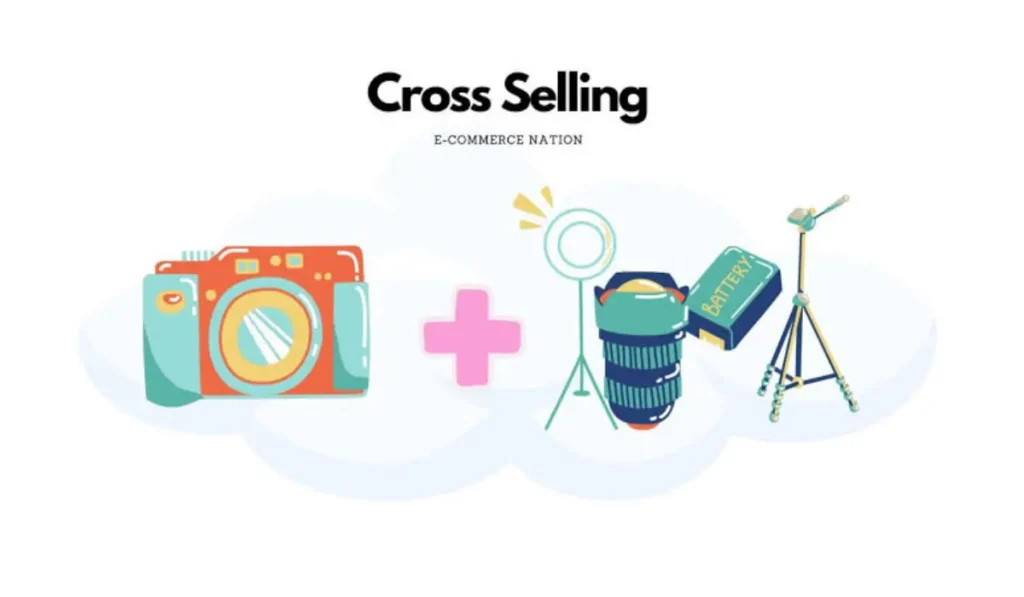
AI can make recommendations. For example, Amazon offers personalized item recommendations. They use customer behaviour and CRM data. Shopify, HubSpot, Mailchimp and Klaviyo use them.
They use them to find and meet more customer needs. This helps them to drive sales. Here we will learn all the Cross-Selling Examples we can get online.
Amazon Personalize
Things how Amazon uses tools to cross-sell. Here it’s an explanation of the entire path they follow:
- It’s an AI personalization engine. It can use customer behavior and past purchases to make better cross-sell recommendations.
- This uses machine learning algorithms to create personalised product recommendations. It offers real-time recommendations for items customers are browsing or buying.
- These products on Amazon Personalise relate to or complement each other. These recommendations appear on product pages and in the shopping cart dropdown.
- They also show up in checkout experience margins throughout the customer journey. This engine is always getting smarter.
- It learns from behavioral data to make its recommendations more relevant. This personalized approach gives you a higher chance of more purchases. It also improves the shopping experience.
Shopify Product Recommendations
Things how Shopify uses the process to cross-sell. Here it’s an explanation of the entire path they follow:
- It uses data about customer behaviour to make automatic suggestions. The suggestions are for related products. They show up on product pages and at checkout.
- The software reads the customer’s browsing history, past purchases and other interaction data. It uses this info to offer items that go with what the customer is viewing or buying. They are what the customer is more interested in.
- Shopify shows these tips at key moments, like during purchase or at checkout. They improve the shopping experience and increase cross/up sales.
- It guarantees up-to-date recommendations. They also boost overall sales by a huge 27%.
HubSpot CRM
Things how Hubspot CRM uses the process to cross-sell. Here it’s an explanation of the entire path they follow:
- It uses customer information to pick what product to recommend. This happens during a conversation or follow-up message.
- Sales teams can use insights on customer purchase history, preferences, and behaviour. They can use them to offer complementary products that address extra needs. These recommendations are made in HubSpot CRM.
- They are sent via automated workflows with email campaigns. This ensures they are not just targeted, but also timely and accurate. It also helps boost sales and improve Customer Experience.
- It does this by offering products recommended by the data it picks up from each user.
Algolia Recommend
Algolia Recommend is powered by Algolia. Things how Algolia Recommend uses the process to cross-sell. Here it’s an explanation of the entire path they follow:
- It displays relieving products to customers on the site. It does so based on the site’s catalogue and customer interaction data.
- Algolia finds products that pair naturally with what users are seeing or buying. It does this based on what the users are looking for and how they behave on the website. Making recommendations is based on real-time data.
- It keeps words fresh and in front of customers with context. The better shopping experience also leads to a 26% increase in sales. This comes from targeted cross-selling, based on Algolia’s better algorithm. This method boosts revenue.
Mailchimp
Mailchimp is a smart cross-selling tool. It uses customer segmentation and data on behaviour. It even sends follow-up emails to your targets. Here it’s an explanation of the entire path they follow:
- Mailchimp will study the customer and their purchase history. They will use this to suggest personalised products after the purchase.
- The second point of this email campaign is to recommend other products bought with it. This is very helpful to increase the chances of more sales to that customer.
- Mailchimp does this using automation. It raises conversion rates and engagement. It ensures repeat purchase behaviour by giving relevant product recommendations.
Adobe Target
Adobe Target converts web content. It does this by reviewing actual customer actions and preferences at the time. It shows cross-selling product recommendations on the website.
This increases their relevance and engagement. Adobe Target enables it’s extraordinary Offers. They mirror the sales pitch to the things of each user. They provide a 28% success rate in boosting sales via relevant cross-selling.
Klaviyo
Klaviyo makes targeted email campaigns based on in-depth behavioural and purchase data. It analyses customer transactions. It recommends similar products in follow-up emails. This improves customer engagement and sales.
Personalised recommendations help businesses ensure that customers are never offered irrelevant products. This process leads to the success of your cross-selling strategy.
Here, Klaviyo plans its strategy around addressing individual needs. They also focus on driving repeat purchases and maximising revenue.
Cross Selling or Upselling
While upselling and cross-selling improve your sales. Their goals are to get more revenue and higher customer satisfaction. However, they do it differently. When you use Product Recommendations, you are cross-selling.
Example: Selling additional items to people who are already buying something else. A customer is buying a laptop at checkout.
| Aspect | Cross-Selling | Upselling |
| Definition | Recommending additional or complementary products. | Encouraging the purchase of a more expensive version or additional features. |
| Focus | Broadens the customer’s purchase by suggesting related items. | Enhances the current purchase by offering upgrades or premium options. |
| Example | Offering a laptop bag with a laptop purchase. | Suggesting a higher-tier smartphone model. |
| Goal | Increase the value of the transaction by adding more items. | Maximise the transaction value by promoting higher-priced options. |
| Benefit | Diversifies purchases and enhances customer satisfaction. | Increases revenue per transaction and overall profitability. |
Upselling is different. This means getting your existing customers to buy a pricier version. They are interested in the product.
For example, a customer may be upgraded to a higher-end model with additional benefits. Their interest was in a low-end smartphone.
| Cross-Selling | Upselling | |
| Definition | Suggesting complementary products to the current purchase. | Encouraging customers to upgrade to a higher-priced item. |
| Example | Offering laptop accessories with a laptop purchase. | Suggesting a premium smartphone instead of the basic one. |
| Average Success Rate (%) | 25% | 20% |
| Average Increase in Order Value (%) | 15% | 10% |
Both strategies can help. However, it depends on whether to cross-sell or Upsell. Customer tastes, trends and the context of sales drive cross-selling. It’s a common tactic that companies use.
Cross Sales and Up Sales
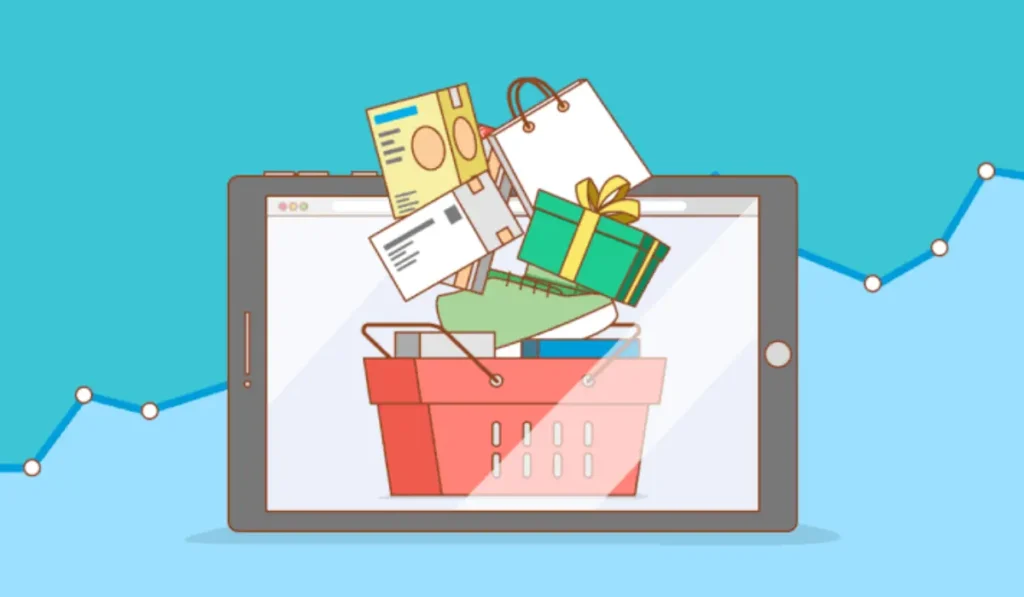
Businesses can use cross-sell and upsell strategies. These are part of a sales process aimed at getting the most revenue at once. Cross-selling expands purchases by selling extra products. Upselling increases sales with better or premium alternatives.
| Aspect | Cross-Selling | Upselling |
| Definition | Recommending additional or complementary products. | Encouraging the purchase of a more expensive version or additional features. |
| Focus | Broadens the customer’s purchase by suggesting related items. | Enhances the current purchase by offering upgrades or premium options. |
| Example | Offering a laptop bag with a laptop purchase. | Suggesting a higher-tier smartphone model. |
| Goal | Increase the value of the transaction by adding more items. | Maximise the transaction value by promoting higher-priced options. |
| Benefit | Diversifies purchases and enhances customer satisfaction. | Increases revenue per transaction and overall profitability. |
This pair makes customers happier and boosts sales. Using cross-sell and upsell together makes the best sales strategy. Complementary products and premium offerings can raise customer satisfaction and margins. With a 360-degree customer view, each customer interaction is a chance to sell more and add value.
Upsell Techniques
Upsell Techniques are given below:
- Upsell Techniques: Bundle Offers: Purchase similar products at more for less pricing.
- Special Promotions: Urgency can drive to a faster action. Upgrade Path: Illustrate how premium versions offer more benefits or features.
- Multiple choice option: Offer multiple purchase options. The options scale based on their benefits.
- Social Proof: Show off any testimonials or good reviews to remind them of how good your upsells are.
- Personalised Recommendations: Customised Recommendations provide customer-specific information. They recommend upgrades based on each customer’s preferences and previous purchases.
Upselling Techniques
Here is a list of techniques we need to follow during upselling:
- Product Bundling means offering related products together at a lower price. It encourages customers to upgrade their purchases.
- Use tiered pricing. Offer multiple pricing tiers. Each has more features or benefits. They entice customers to opt for a higher-priced option.
- Create urgency with limited-time offers. Offer exclusive deals or discounts for a short time. This will push customers to upgrade right away.
- Use customer data to suggest upgrades or add-ons modify to their preferences. This increases the chance of purchase.
Cross Sell Techniques
Here is a list of techniques we need to follow during cross-selling:
- Bundling: Offering related products as a package deal.
- Recommendations: Suggesting complementary items based on customer preferences.
- Discounts: Providing incentives for purchasing extra products.
- Product Placement: Strategically positioning related items near each other.
- Email Campaigns: Sending targeted emails with cross-selling suggestions based on previous purchases.
Upselling Tips
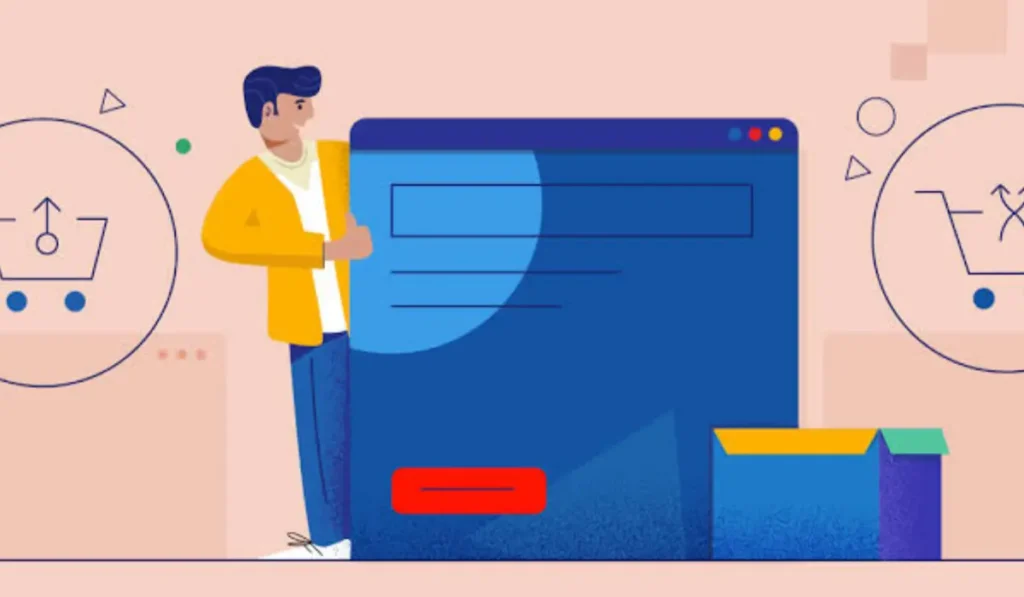
Here is a list of tips we need to follow to upsell:
- Understand customer’s needs to suggest relevant upgrades.
- Highlight the benefits of premium options.
- Offer incentives or discounts for upsells.
- Provide clear and transparent pricing.
- Use convincing language and visuals.
- Timing is crucial, suggesting upsells at the right moment.
- Train staff to identify and present upsell opportunities.
Upsell Page
Pages we should keep on our homepage or our entire website.
List of Pages:
- Homepage
- Product Catalogue
- About Us
- Contact Us
- FAQs
- Blog
- Customer Testimonials
- Terms and Conditions
- Privacy Policy
- Careers
FAQs
Can upselling and cross-selling be annoying to customers?
Yes, upselling and cross-selling can be annoying to customers if not done correctly.
1. Customers may become irritated and leave due to aggressive sales tactics.
2. If the suggestions aren’t relevant to the customer’s needs or interests, it can feel pushy.
3. Timing is crucial; interrupting the buying process can lead to frustration.
4. Personalized and relevant recommendations provide value. They can make upselling and cross-selling more acceptable. They can even make them appreciated.
How can I track the success of my upselling and cross-selling efforts?
Use metrics like average order value (AOV) to see if it’s increasing over time. Here are some more things to focus on,
1. Track conversion rates on upsell and cross-sell offers. This will measure how many customers take advantage of them.
2. Look at customer feedback and satisfaction scores. This will ensure that they like your work.
3. Use analytics tools to track click-through rates on upsell and cross-sell recommendations.
4. Compare the revenue from upselling and cross-selling to your total sales. This will help you gauge their effectiveness.
Where should I place upsell and cross-sell offers?
Put upsell and cross-sell offers on product pages. Customers are already interested in buying. Here are some more things to focus on,
1. During checkout, offer extra products. They should complement what’s already in the cart.
2. Send follow-up emails after a purchase with related products or upgrades.
3. Use pop-ups or banners on your website to show special offers. But, make sure they are not intrusive.
4. Integrate suggestions within the shopping cart summary page for a seamless experience.
Do upsells and cross-sells work better online or in person?
Both online and in-person upselling and cross-selling have their advantages. They can be effective. Here are some more things to focus on,
1. Online, you can use data analytics. They’ve offered personalized recommendations based on browsing and buying history.
2. In-person, sales staff can use personal interaction. They can use it to understand customer needs and give tailored suggestions.
3. Online provides automated and consistent recommendations. In-person interactions adapt flexibly to customers’ reactions.
4. The effectiveness depends on the industry, product type, and customer preferences.
What if I don’t have a lot of product variations to offer?
Focus on offering bundled deals. They combine many products for a better value. Here are some more things to focus on,
1. Highlight any available upgrades or premium versions of your existing products.
2. Offer services or warranties that complement the products you sell.
3. Use scarcity and exclusivity, like limited-edition items, to enhance its appeal.
4. Collect customer feedback. Use it to understand what new products or variations they want for future expansions.

